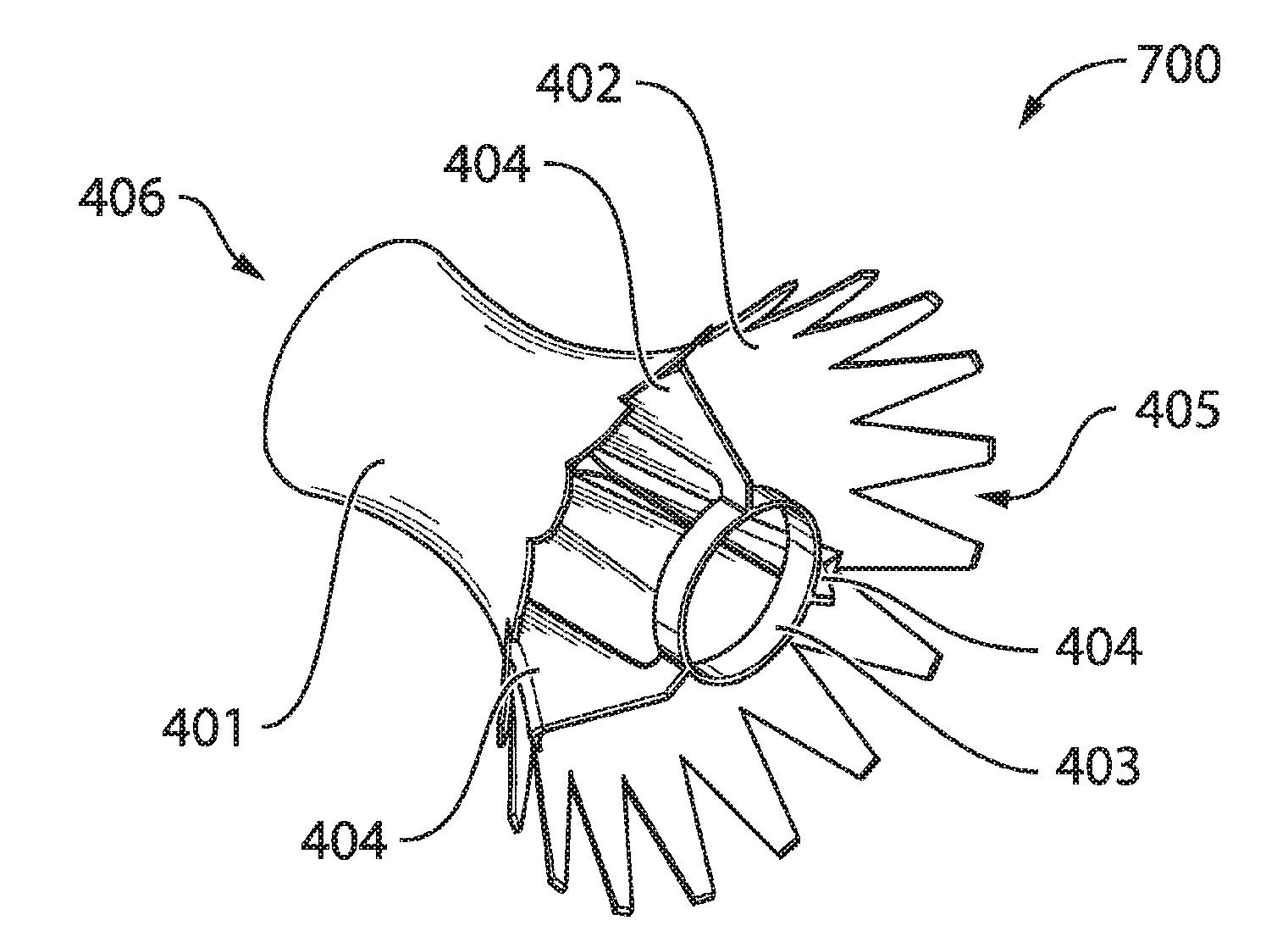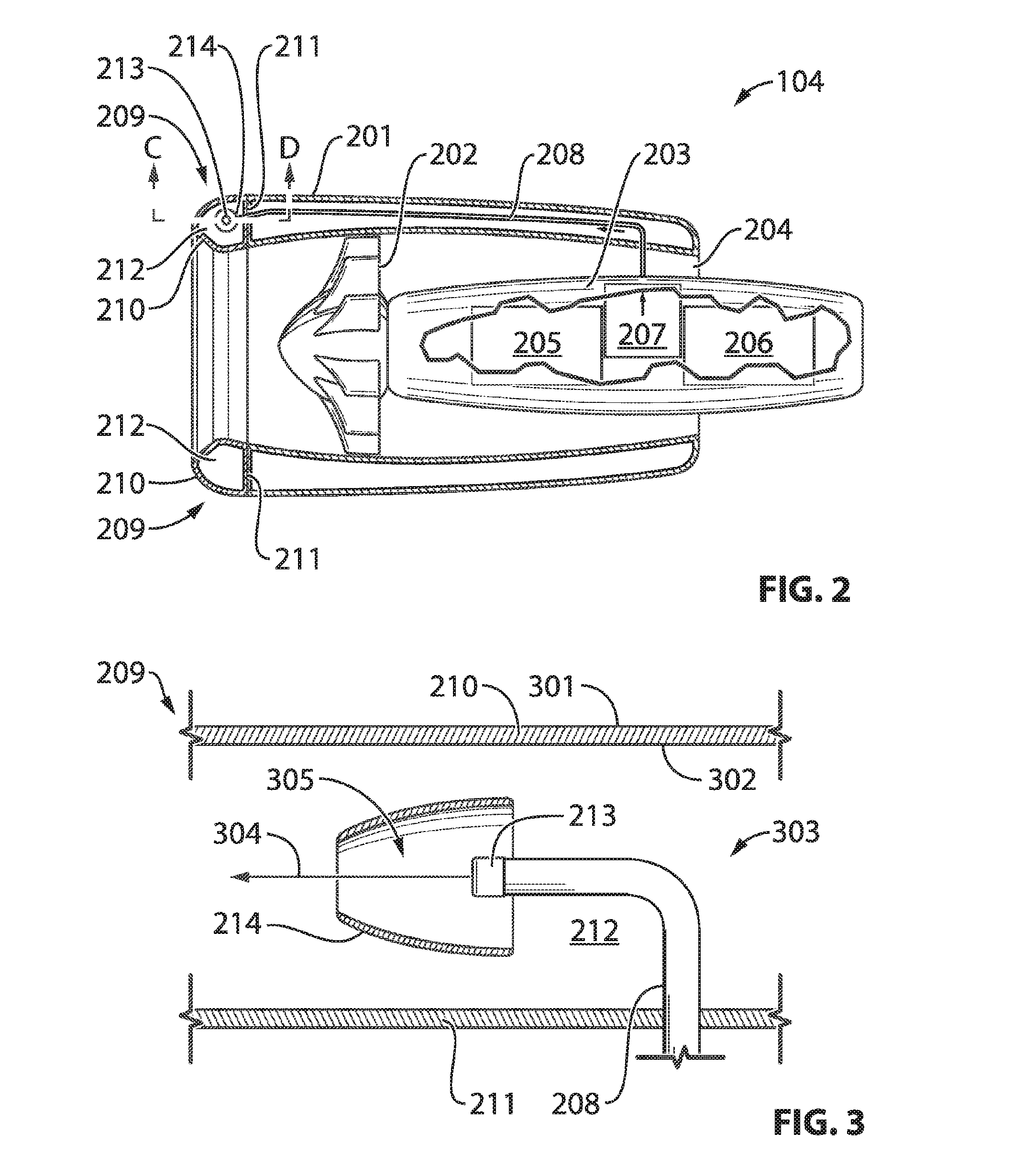Anti-icing system for an aircraft
- Summary
- Abstract
- Description
- Claims
- Application Information
AI Technical Summary
Benefits of technology
Problems solved by technology
Method used
Image
Examples
first embodiment
[0048]FIGS. 4-6 schematically illustrate the gas-mixing device 214 which will be referred to as first gas-mixing device 400 hereinafter for reasons of convenience. FIG. 4 schematically illustrates a perspective view of the first gas-mixing device 400. FIG. 5 schematically illustrates a side view of the first gas-mixing device 400. FIG. 6 schematically illustrates a front view of the first gas-mixing device 400.
[0049]The first gas-mixing device 400 is in the form of a sleeve-like structure, which comprises a main sleeve 401. An inner surface 402 of the main sleeve 401 defines an airflow channel The first gas-mixing device 400 further comprises a mounting sleeve 403 for mounting the first gas-mixing device 400 on a nozzle, such as the nozzle 213 illustrated in FIGS. 2 and 3. The main sleeve 401 is fixed to the mounting sleeve 403 by means of various fixation fins 404.
[0050]The mounting sleeve 403 is located at an inlet 405 of the first gas-mixing device 400. In more detail, FIG. 5 sch...
second embodiment
[0057]FIGS. 10-12 schematically illustrate the gas-mixing device 214, which will be referred to as second gas-mixing device 1000 hereinafter for reasons of convenience. FIG. 10 schematically illustrates a first perspective view of the second gas-mixing device 1000. FIG. 11 schematically illustrates a second perspective view of the second gas-mixing device 1000. FIG. 12 schematically illustrates a front view of the second gas-mixing device 1000.
[0058]The second gas-mixing device 1000 has some similarities with the first gas-mixing device 400 described hereinbefore. The second gas-mixing device 1000 is also in the form of a sleeve-like structure comprising a main sleeve 401 of which an inner surface 402 defines an airflow channel The second gas-mixing device 1000 further also comprises a mounting sleeve 403 for mounting the second gas-mixing device 1000 on a nozzle 213, such as the nozzle 213 illustrated in FIGS. 2 and 3.
[0059]Further similarities are as follows. The mounting sleeve 4...
PUM
 Login to View More
Login to View More Abstract
Description
Claims
Application Information
 Login to View More
Login to View More - R&D
- Intellectual Property
- Life Sciences
- Materials
- Tech Scout
- Unparalleled Data Quality
- Higher Quality Content
- 60% Fewer Hallucinations
Browse by: Latest US Patents, China's latest patents, Technical Efficacy Thesaurus, Application Domain, Technology Topic, Popular Technical Reports.
© 2025 PatSnap. All rights reserved.Legal|Privacy policy|Modern Slavery Act Transparency Statement|Sitemap|About US| Contact US: help@patsnap.com



